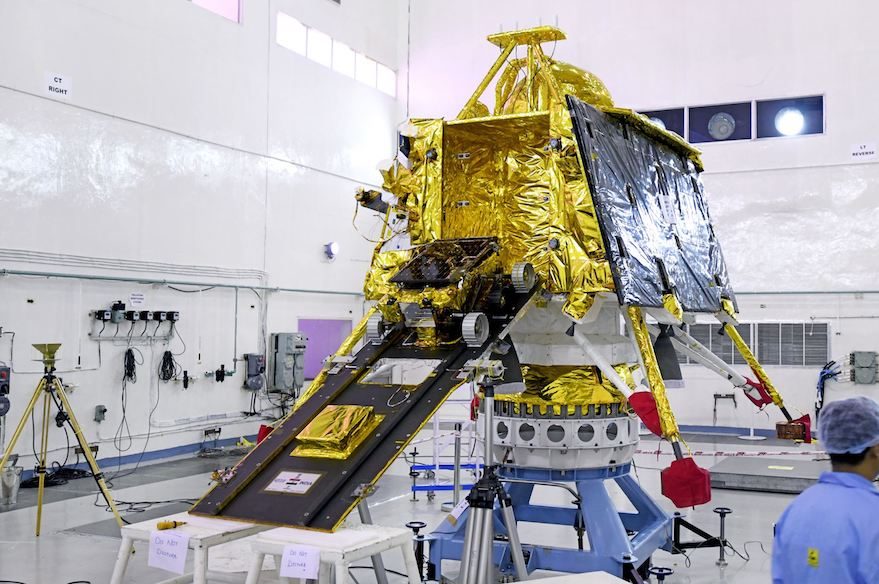India’s $150 million Chandrayaan-2 lunar mission will attempt to land an unmanned rover on the moon’s surface this evening for a pioneering exploration of the lunar south pole.
If successful, it will be the country’s second journey to the satellite, following the 2008 Chandrayaan-1 orbiter mission.
The Chandrayaan-2 spacecraft was launched aboard the Indian Space Research Organization’s GSLV MkIII-M1 rocket on July 22. The spacecraft, which arrived in lunar orbit one month later, consists of the orbiter vehicle, the Vikram lander and the Pragyan rover. The Vikram lander will be the first Indian-made object to touch the lunar face, after which it will deploy the artificial intelligenve-powered six-wheeled Pragyan rover.
Chandrayaan-2 will also be the first mission to the southern pole of the moon, where the U.S. intends to land astronauts by 2024. This region is known to contain frozen water, an element crucial to organic life that NASA says is also used in cooling equipment and needed for production of rocket fuel for missions farther into the solar system.



Comments
Post a Comment